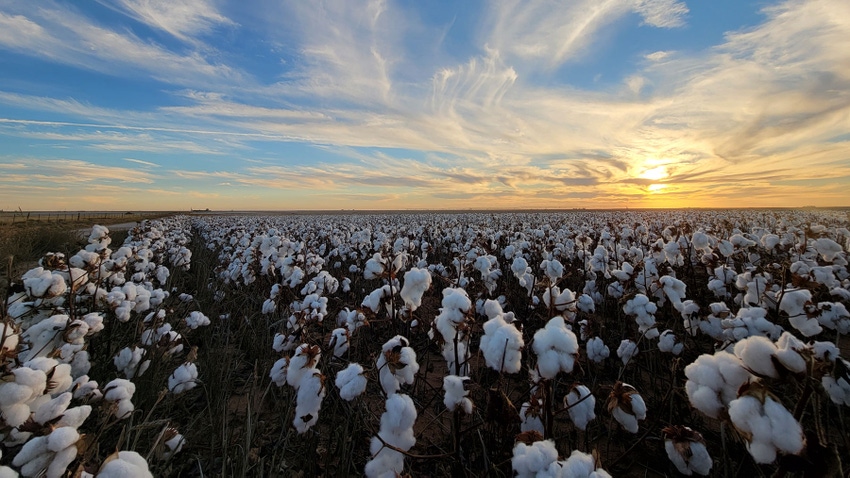
Andy Zareco, Newbern, Tenn., is excited about cotton.
“It looks tough as far as price is concerned,” Zareco told Farm Progress earlier this spring. “But cotton acreage for folks who already grow cotton is likely to increase substantially in West Tennessee.”
Zareco said farmers hope for another year like 2023. “For us, county yields and margins for cotton pencil in better than corn or soybeans.”
Lee Cromley in Bulloch County, Ga., is not exactly excited but agrees cotton offers the best opportunity for his acreage.
“Our cotton acreage will remain about the same as last year,” Cromley said. “We rotate cotton and peanuts. That rotation has been a good fit for the last 10 to 15 years.”
The combination of peanuts and cotton, both of which demand specialized equipment, limits flexibility.
“We have a big equipment investment. Peanuts in rotation has been good for us, but it takes out a few options growers in other areas might have. We can’t flex back and forth. Also, the corn and bean market has backed off recently.”
Moisture matters
Barry Evans in Kress, Texas, said some winter moisture created a little optimism for cotton in the High Plains.
“We do not have a full profile, but winter moisture is cause for optimism, and the market is up a little bit, in the mid-80s,” he said.
Evans will stick to his rotation scheme, half cotton and half milo.
He will add one new wrinkle in acreage allotment. “I’ve planted rye on about one fourth of my acreage, where I did not have enough cover from milo. I will not terminate it or plant a summer crop. I’ll grow the rye as cover, fallow the land in summer and plant cotton on that land in 2025. … I believe in the rotation. The fallow period with a short water supply is important.”
Zareco will tweak rotation a bit. He rotates cotton, corn, and soybeans. “I’ll stay mostly the same except corn acres will drop considerably and go to cotton.”
“I’m moving to a roller (bale) picker,” Zareco said. “I have picked my last crop with a basket picker. The new picker is more efficient. For one thing, it eliminates two or three workers and doubles the number of acres I can harvest in a day. It’s a lot easier than working with modules.”
Cromley said efficiency is priority. “We are always careful with inputs. I think fertilizer prices will be lower this year and that will help us some.”
Improving efficiency gets harder every year. “We’ve squeezed production costs over the last ten years as much as we can without reducing yield. We walk a fine line we don’t want to cross. We always want to find ways to reduce costs and cut trips across fields. We control everything we can without sacrificing yield,” Cromley said.
Technology has contributed to efficiency over the past decade or so.
“Improvements in seed technology are remarkable and offer opportunities to help us cut costs. The initial cost might be high, but technology in the seed allows us to do lot of things,” Cromley said.
Less tillage
Cutting back on tillage has improved efficiency.
“We no-till most of our cotton,” Zareco said. “We plant behind soybeans, corn or cotton stubble from the prior crop. We run a pretty aggressive row cleaner and burndown a month before planting. That all depends on spring weather.”
He planted some cover, integrating some acreage with winter grazing.
Sustainability, Cromley said, has been a staple for most farmers for years. “We’ve used precision agriculture to apply fertilizer for about 20 years. It’s been an interesting revolution to watch. We’ve reduced tillage and have cut back on other practices.”
Cromley planted a cover crop on a good portion of his acreage. “We were late this year and did not plant as much as we wanted. We’re fairly new to cover crops, but we will do more.”
They use mostly cereal rye and wheat, “whatever is most reasonable. We haven’t tried multiple species yet. Some of those might flare nematodes, and we have enough of those already,” he said.
Evans started converting irrigated acreage to dryland.
“I’m nearly all dryland now,” he said. “I’m converting two pivots to dryland through an NRCS program (Conservation Crop Rotation, Irrigated to Dryland). It’s a five-year commitment to covert to dryland. I’ve done two pivots and plan to do two more.”
He was the first producer in the area to sign up.
“I hope it catches on. Dryland cotton will take more acreage as the Ogallala Aquifer continues to decline. The aquifer has not gotten any better.”
Marketing challenge
Marketing might be the hardest factor in farm management.
“We’re starting to think about selling cotton with equities ranging from 25 to 27. I hope to see it go to 28, but I don’t want to see a good price get away waiting on a better one,” Zareco said.
“Marketing is the most frustrating,” Cromley said. “Any little thing in China or Vietnam can affect the market. Too many factors affect cotton markets, and the variability kills us. Cotton is sensitive to GDP growth in spite of supply and demand issues. We just watch the numbers and adjust.”
“I’m buying some puts,” Evans said. “As the market goes up, I buy a few more puts. I scale up buying.”
He said no one is ever completely happy with put options. “If the market goes up, we regret spending the money on puts, and if the market goes down, we wish we had sold earlier.”
They agree the cotton market offers some challenges, but measured against grain and soybeans, cotton shows more promise.
“Last year, nothing out here was very good,” Evans said. “But cotton was better than grain. I think we will see a pretty good jump in cotton acres.”
Read more about:
Crop RotationAbout the Author(s)
You May Also Like






